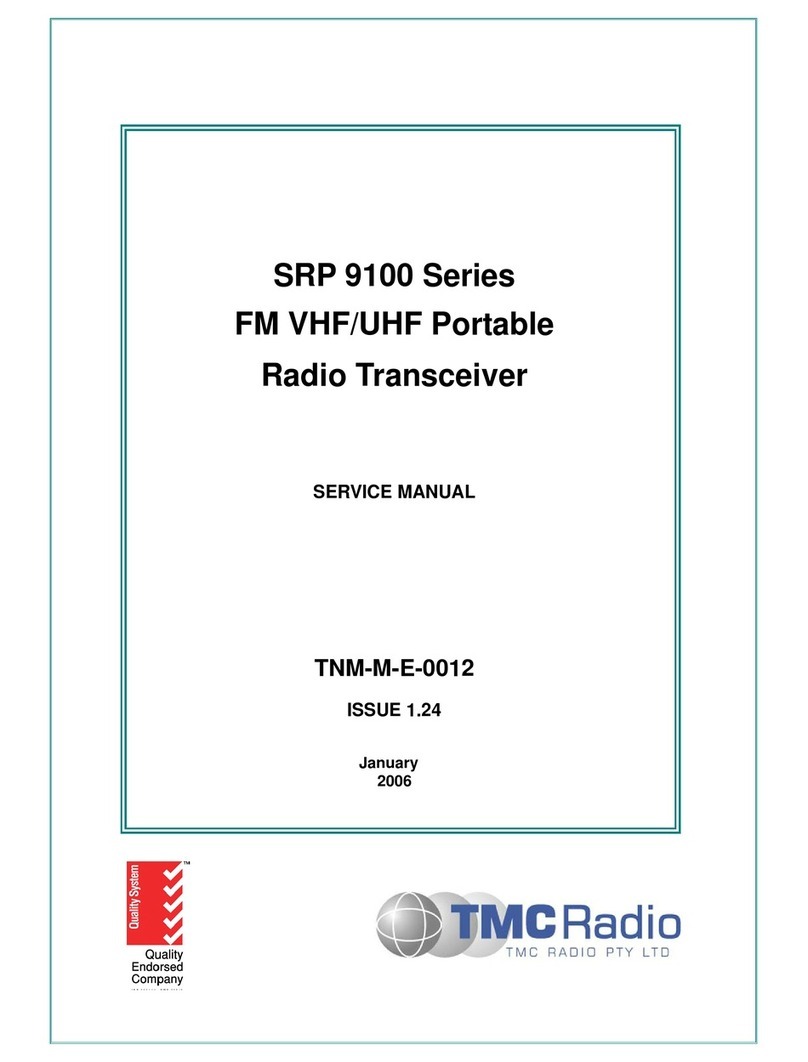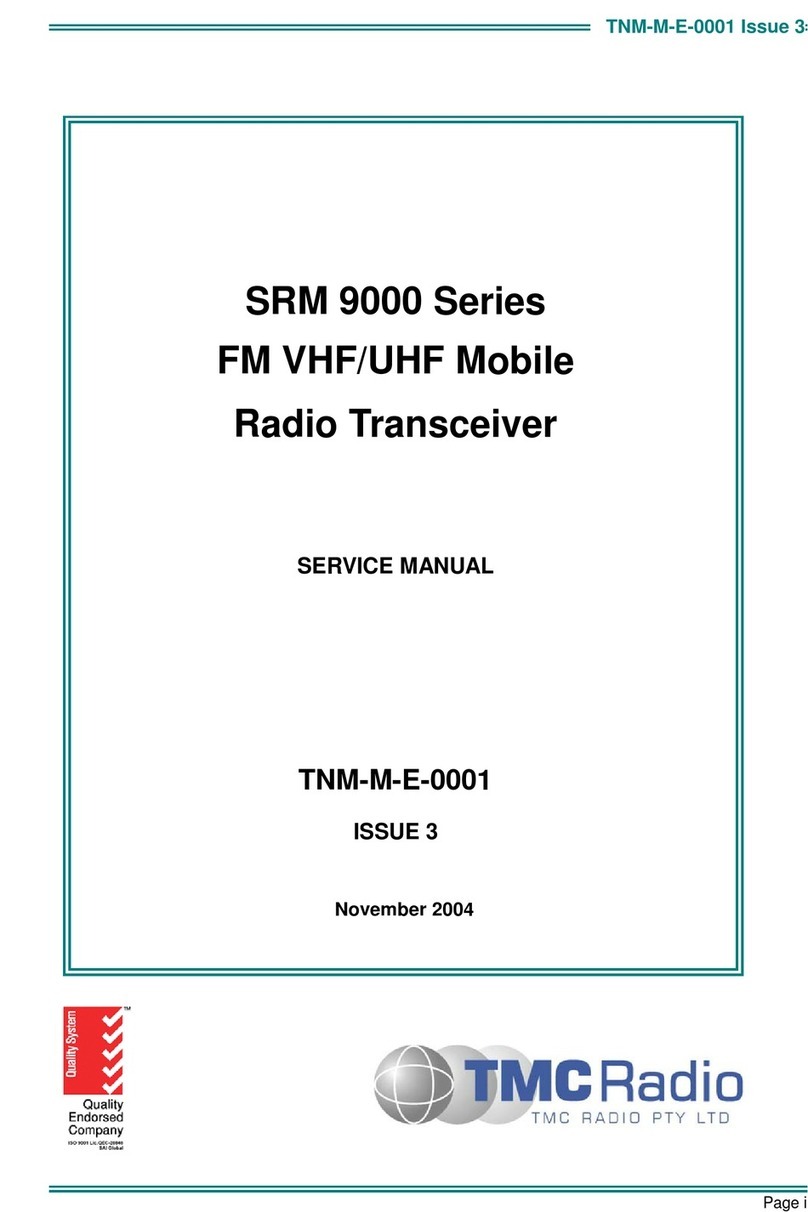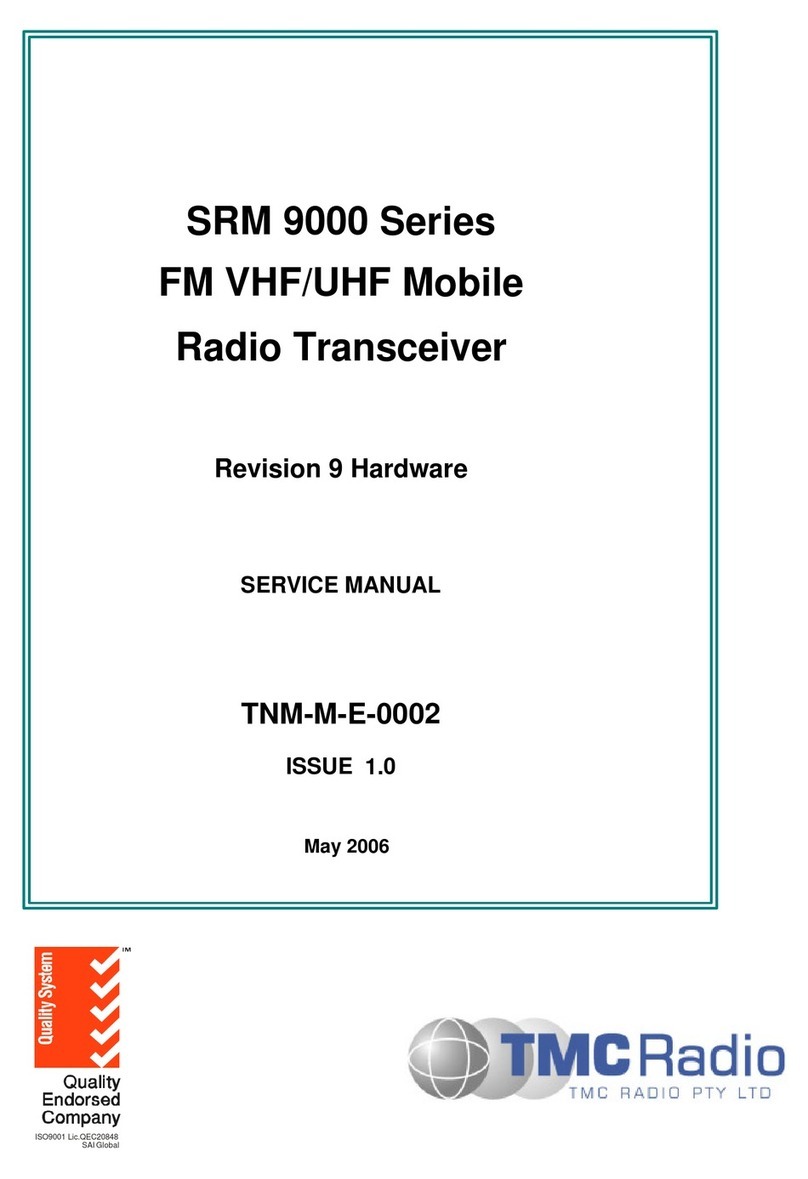
SRM9000X8 800MHz SERVICE MANUAL
© TMC Radio 2008 page ii TNM-M-E-0022 Issue 1
3.1.3 Quadrature Demodulator.....................................................................................................21
3.1.4 Receiver Audio Processing .................................................................................................23
3.2 TRANSMITTER ................................................................................................................................23
3.2.1 Drivers and PA Stages........................................................................................................23
3.2.2 Power Control......................................................................................................................24
3.2.3 Antenna Changeover and Harmonic Filter..........................................................................24
3.2.4 Transmitter Audio Processing.............................................................................................24
3.3 FREQUENCY SYNTHESISER .............................................................................................................26
3.3.1 General................................................................................................................................26
3.3.2 PLL ......................................................................................................................................26
3.3.3 VCOs...................................................................................................................................26
3.3.4 Positive Bias Generator and Loop Filter..............................................................................26
3.3.5 Phase Modulator .................................................................................................................26
3.3.6 Reference Oscillators..........................................................................................................27
3.4 CONTROL.......................................................................................................................................29
3.4.1 DSP and PLA.......................................................................................................................29
3.4.2 PLA PWM............................................................................................................................29
3.5 MEMORY........................................................................................................................................30
3.6 POWER SUPPLIES ..........................................................................................................................32
3.6.1 Power On Function..............................................................................................................32
3.6.2 Power Supplies....................................................................................................................32
3.6.2.1 8V Regulator U900..................................................................................................32
3.6.2.2 5V Regulator U901..................................................................................................32
3.6.2.3 3.3V Regulator U912...............................................................................................32
3.6.2.4 2.5V Regulator U903...............................................................................................33
3.6.2.5 Negative and Positive High Voltage Power Supply U904E/F .................................33
3.6.2.6 Unswitched Battery (13V8_UNSW_F) ....................................................................33
4. ALIGNMENT (LEVEL 3 SERVICE ONLY).......................................................................................34
4.1 GENERAL....................................................................................................................................34
4.1.1 Test Equipment ...................................................................................................................35
4.1.2 Alignment Frequencies........................................................................................................35
4.1.3 Preset Parameters...............................................................................................................36
4.1.4 Alignment Limits ..................................................................................................................39
4.1.5 Band specific frequency limits.............................................................................................39
4.1.6 SRM9000 Radio Test Interface Unit....................................................................................39
4.1.7 Test Setup ...........................................................................................................................40
4.1.8 COMMS Setup.....................................................................................................................41
4.1.9 Band Preparation.................................................................................................................42
4.1.10 Hardware Options Select...................................................................................................42
4.1.11 Radio Preparation..............................................................................................................42
4.1.12 ALIGNMENT PROCEDURE..............................................................................................43
4.1.13 VCO DAC Alignment .........................................................................................................43
4.1.14 TCXO DAC Alignment.......................................................................................................45
4.1.15 Rx Front End DAC Alignment............................................................................................46
4.1.16 Tx Filter DAC Alignment ....................................................................................................47
4.1.17 RSSI Calibration ................................................................................................................48
4.1.18 Mute DAC Adjustment.......................................................................................................49
4.1.19 Tx Power DAC Alignment..................................................................................................50
4.1.18 Tx Modulation DAC Alignment............................................................................................51
4.1.20 PROGRAMMING ALIGNMENT DATA..............................................................................53































